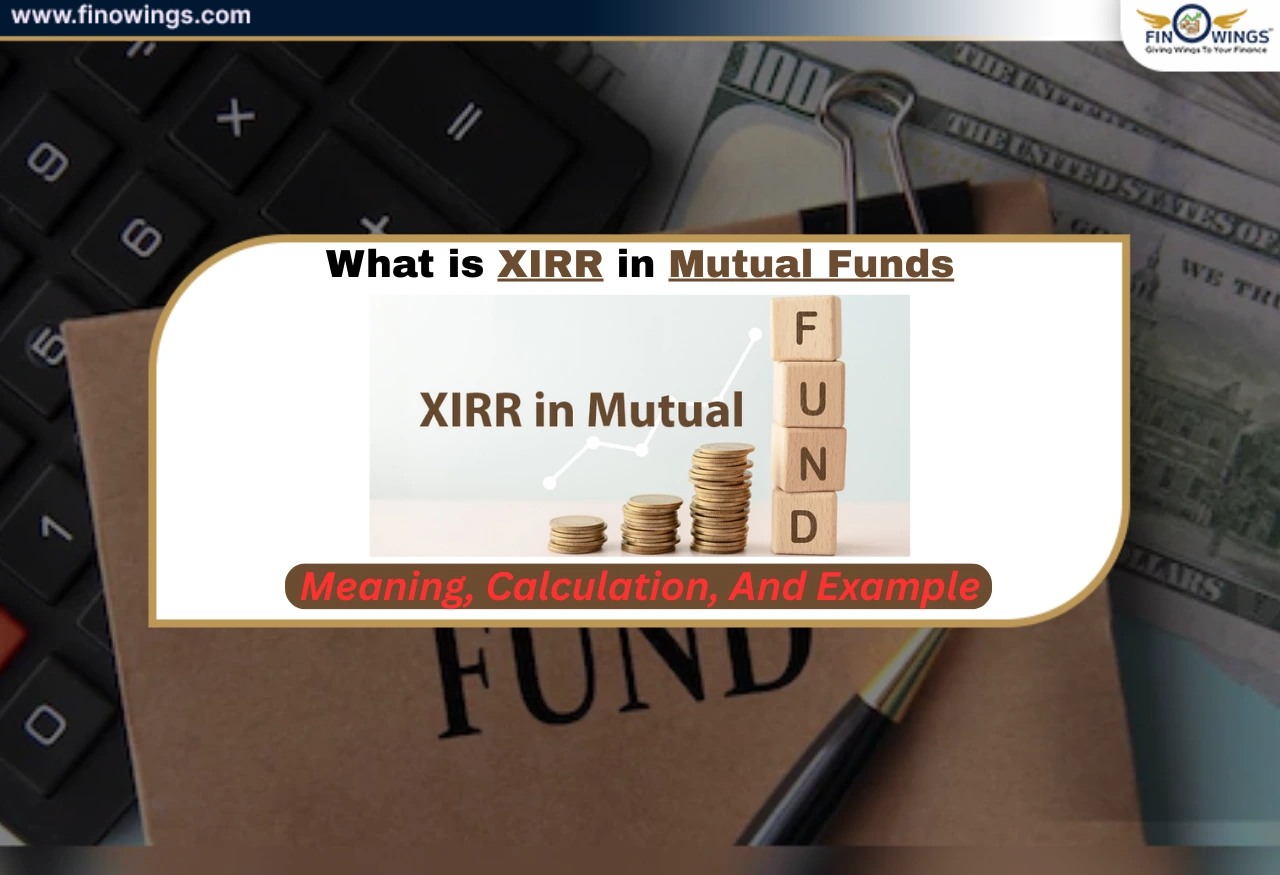Home >> Blog >> National Pension Scheme - All You Need To Know About NPS
National Pension Scheme - All You Need To Know About NPS

Table of Contents
Introduction
The National Pension Scheme (NPS) is a retirement benefit program established by the Government of India to provide all subscribers with a steady income after retirement. The PFRDA (Pension Fund Regulatory and Development Authority) governs the NPS.
What is NPS?
The National Pension Scheme is a Central Government social security initiative. Except for members of the armed forces, this pension program is open to public, private, and even unorganized employees.
The program encourages employees to invest regularly in a pension account throughout their employment. After retirement, subscribers can withdraw a portion of the corpus. If you have an NPS account, you will receive the remaining monthly pension after retirement.
Previously, the NPS only applied to Central Government employees. However, the PFRDA has now made it available to all Indian citizens.
The NPS is extremely valuable to anyone who works in the private sector and needs a regular pension after retirement. The scheme is portable across jobs and locations and provides tax benefits under Sections 80C and 80CCD.
NPS Account provides the following advantages:
-
Regulated: PFRDA (Pension Fund Regulator, Ministry of Finance, Government of India), which provides transparent regulations governing the activities, regulates NPS. NPS Trust monitors compliance with the rules regularly.
-
Voluntary: It is a volunteer program available to all Indian nationals. At any time, you can invest your money in your NPS account.
-
Flexibility: You can choose or modify the fund manager, POP (Point of Presence), and investment strategy. It guarantees that you may maximize profits based on your comfort level with different asset classes and fund managers (equity, corporate bonds, government securities, and alternative assets).
-
Economical: NPS is one of the most affordable investment options.
-
Portability: Regardless of changes in work, city, or state, NPS accounts or PRANs will remain the same.
-
Transfer of Superannuation Funds: NPS account holders are not subject to tax consequences when transferring them to their NPS accounts. (Following endorsement by appropriate authorities)
Benefits from NPS's triple tax structure include the following:
Tax benefits for Salaried Individual
-
Section 80CCD (1B) allows you to obtain a tax exemption of up to Rs. 50,000. This benefit exceeds the section 80C maximum of Rs. 1,50,000.
-
You can invest up to 10% of your basic salary + dearness allowance and claim a tax break on the amount invested under Section 80CCD (1). Section 80C of the Income Tax Act of 1961 limits this tax exemption to Rs. 1,50,000.
Tax Benefits for Self-Employed Individuals
-
Section 80CCD (1) allows you to invest up to 20% of your gross annual income and claim a tax deduction on the amount invested. Section 80C of the Income Tax Act of 1961 limits this tax exemption to Rs. 1,50,000.
-
Section 80CCD (1B) allows you to claim a tax deduction of up to Rs. 50,000. This benefit exceeds the Rs. 1,50,000 limit under section 80C.
Types of NPS Accounts
You can open two sub-accounts with the same Permanent Retirement Account Number (PRAN). In NPS, these sub-accounts are referred to as tiers:
Tier I: This is also known as a pension account. Contributions to this account of up to Rs. 50,000 are eligible for an additional deduction from taxable income under section 80CCD (1B). This is more than the Rs 1.5 lakhs-limit under Section 80C. Withdrawals are limited and subject to specific terms and conditions.
Tier II: You can invest more money in a Tier II NPS account. The subscriber may withdraw his entire accrued corpus under Tier II at any time. If you have not made the initial contribution to your Tier II account, it will be deactivated automatically as per the process. This account offers no tax advantages. Tier II funds can be transferred to Tier I.
Tier I funds cannot be transferred to Tier II.
NPS Account Models
Individual NPS accounts (All Citizens Model) and Corporate NPS accounts are the two main types of NPS accounts.
All Citizen Model
The subscriber (Account holder) is the only contributor in an Individual NPS account. The subscriber makes all decisions regarding Scheme preference, Investment choice, Annuity Service Provider, and so on. Any Indian citizen can voluntarily open an Individual NPS account to benefit from investment tax breaks and ensure a steady income after retirement. The entry age ranges from 18 to 70 years.
Corporate Model
The subscriber and the employer can contribute to the subscriber's NPS account in a Corporate NPS account. For employees who want to be eligible for corporate NPS benefits, a corporate entity must register for corporate NPS.
Entities Involved in NPS:
The regulator has appointed multiple agencies to provide various NPS services to ensure greater transparency and efficiency.
Pension Fund Regulatory and Development Authority (PFRDA) - Established by the Government of India on August 23, 2003, PFRDA is a regulator for NPS. PFRDA promotes old-age income security by establishing, developing, and regulating pension funds and protecting subscribers' interests in pension fund schemes and related matters.
NPS Trust - The Trust body established for NPS. It is in charge of looking after the funds under NPS by prudently monitoring / auditing the portfolio of the Pension Fund Manager regularly to protect the interests of the subscribers.
Central Recordkeeping Agency (CRA) - The PFRDA has appointed K-Fin Technology Private Ltd and NSDL e-Governance Infrastructure Limited to maintain data and records of NPS subscribers. They oversee all NPS subscribers' recordkeeping, administration, and customer service.
PFMs (Pension Fund Managers) (As on April 28, 2022) -
Your contributions are managed by PFMs appointed by PFRDA and subject to regulatory guidelines. You have complete freedom to select any of the seven PFMs listed below:
-
Aditya Birla SunLife Pension Management Limited
-
HDFC Pension Management Company Limited
-
ICICI Prudential Pension Funds Management Company Limited
-
Kotak Mahindra Pension Fund Limited
-
LIC Pension Fund Ltd
-
SBI Pension Funds Private Limited
-
UTI Retirement Solutions Limited
Annuity Service Providers (ASPs) (As on April 28, 2022) -
After reaching the age of 60, you will be able to choose from the Annuity Plans offered by the Annuity Service Providers listed below, who the PFRDA has appointed:
-
HDFC Life Insurance Company Limited
-
Life Insurance Corporation of India Limited
-
ICICI Prudential Life Insurance Company Limited
-
SBI Life Insurance Company Limited
-
Star Union Dai-Ichi Life Insurance Co. Ltd
-
Bajaj Allianz Life Insurance Company Limited
-
Edelweiss Tokio Life Insurance Company Limited
-
India First Life Insurance Company Limited
-
Canara HSBC Oriental Bank of Commerce Life Insurance Company Limited
-
Kotak Mahindra Life Insurance Company Limited
-
Max Life Insurance Co. ltd.
-
Tata AIA Life Insurance Company Limited
-
PNB MetLife India Insurance Co. Ltd
How to Open an NPS account?
By visiting our website, you can enroll in NPS online in a paperless process from the comfort of your home or office. The scheme's primary goal is to provide an appealing long-term savings avenue for all Indian citizens to plan for retirement through safe and reasonable market-based returns. Any Indian citizen between 18 and 70 can open an account.
Steps for creating an online account:
-
You can enroll in NPS by selecting 'Apply Now under NPS (National Pension System)
-
You can open an account with any CRA (K-Fin Technologies Private Limited or NSDL e-governance infrastructure LTD.).
-
You will be given an online form to complete with mandatory fields.
-
Your registration (account opening) acknowledgment ID will be generated. Based on the acknowledgment number search, there will be a provision to complete the registration (account opening form) later, within 15 days.
-
KYC verification methods
- Pan-based - Bank will verify your KYC based on the information in your bank account. (As a result, the information entered into NPS should be identical to that of the bank account.)
- Offline Aadhaar. XML KYC - KYC information will be retrieved from the UIDAI database.
-
You must provide information such as bank details, scheme details, nominee details, etc.
-
You must upload a photograph, a specimen signature, a canceled cheque/bank statement/passbook copy, and a PAN copy in the file size allowed.
-
You must make a minimum contribution of Rs. 500.
-
You will be directed to an online payment platform where you will complete the transaction using NetBanking or a payment gateway.
-
Following successful payment, you will be assigned a 12-digit PRAN, and a PDF form will be generated based on your provided information.
-
PRAN will be sent to your registered email and SMS.
-
E-Sign/OTP - After completing the registration process, you will be required to complete an online e-sign or OTP-based confirmation. This is to avoid the need for a physical registration form.
What are the Corporate Benefits?
PFRDA has introduced the 'Corporate NPS' model, which allows corporations to offer NPS investment benefits to all employees. Their employer-employee relationship covers this offer.
Corporate Benefits:
-
When offering NPS to employees, corporations bear no administrative or fund management costs.
-
The formation of trust is not required for the establishment of an NPS in the company.
-
A simple process can be used to add and remove employees from the NPS scheme.
-
As an employer, you can choose the NPS options for your employees, such as percentage contribution, duration of opt-in/opt-out, and so on. You can also choose to offer NPS as a voluntary scheme to all or a subset of employees.
-
For the private sector, NPS is a voluntary program that can run alongside any other retirement benefit program implemented by the company.
-
NPS account holders can transfer their Superannuation funds to their NPS account without incurring any tax consequences. (After approval from the appropriate authorities)
Other Corporate Benefits:
-
As a corporate NPS account holder, you can invest up to 10% of your basic salary + dearness allowance through your employer. The employee may claim tax exemption for this investment under Section 80CCD(2) of the Income Tax Act of 1961. An absolute amount cap of Rs. 7,50,000 has been imposed on the employer contribution to PF (Provident Fund), SA (Superannuation), and NPS (National Pension System).
-
Section 80CCD allows employees to claim a tax exemption of up to Rs. 50,000. (1B). This benefit exceeds the Rs. 1,50,000 limit under Section 80C.
-
You can invest up to 10% of your basic salary + dearness allowance and claim a tax break on the amount invested under Section 80CCD (1). Section 80C of the Income Tax Act of 1961 limits this tax exemption to Rs. 1,50,000.
For example,
If an employee earns Rs. 100,000, he contributes Rs. 100,000 to his NPS through employer contributions. The employee is eligible to save this additional Rs. 1,00,000 as tax-free under Section 80CCD(2). Given that the employee is in the 30% tax bracket, the employee will save approximately Rs. 30,000 in tax payments for one fiscal year.
Conclusion:
The National Pension System provides subscribers with various investment options as well as the ability to select fund managers of their choice.
Compared to other investment instruments, NPS offers an interest rate of up to 9%-12%, depending on the scheme chosen by the investors.


















